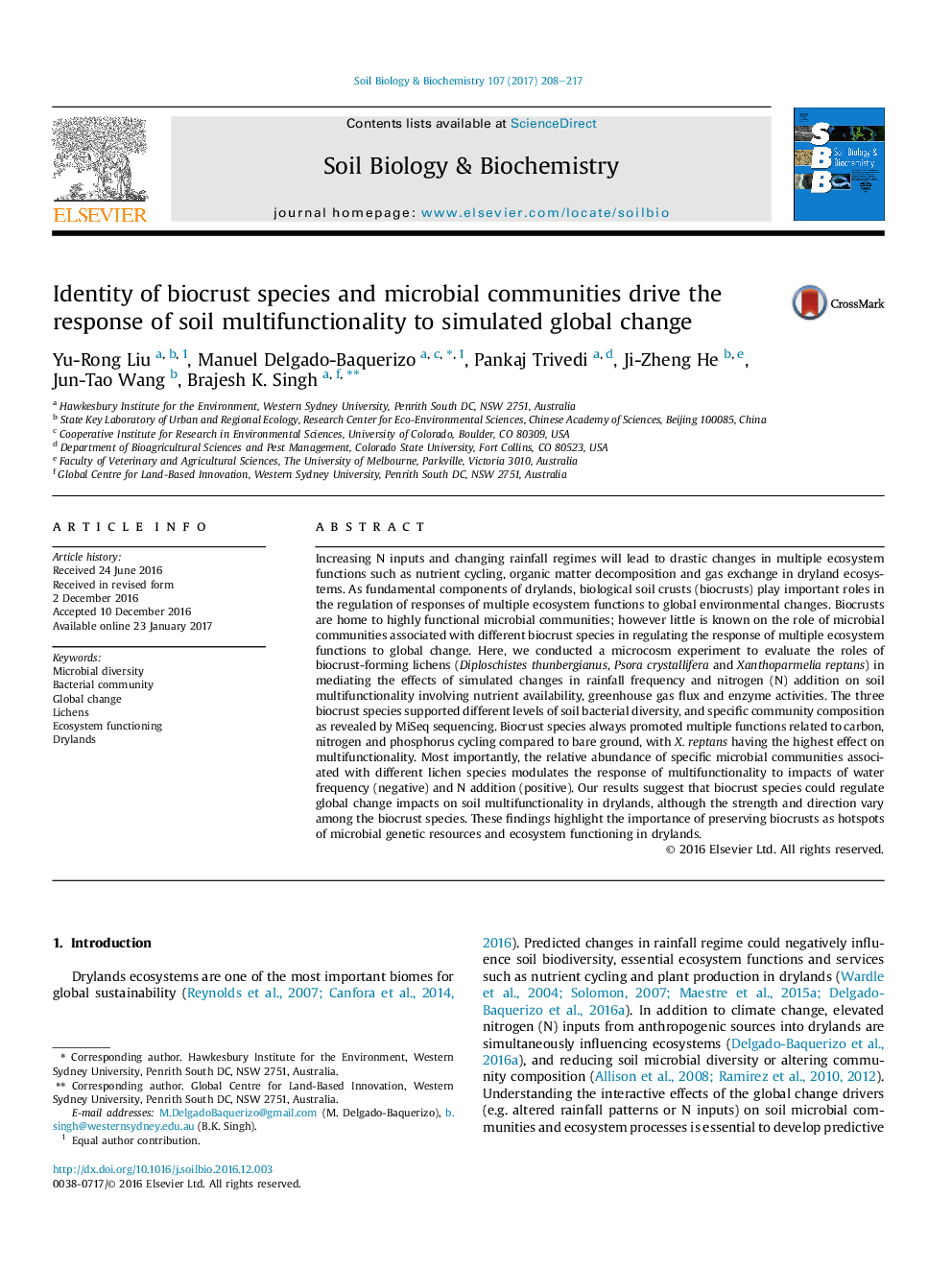| کد مقاله | کد نشریه | سال انتشار | مقاله انگلیسی | نسخه تمام متن |
|---|---|---|---|---|
| 5516431 | 1542577 | 2017 | 10 صفحه PDF | دانلود رایگان |
- Does identity of biocrust species regulate the response of multifunctionality to global changes?
- Biocrust species always promoted multifunctionality compared to bare ground.
- The strength and direction in the response of multifunctionality vary among the biocrust species.
- Microbial communities associated with different biocrust species drive the response of multifunctionality to global change.
- Biocrust needs to be preserved to protect soil microbial genetic resources and ecosystem functions.
Increasing N inputs and changing rainfall regimes will lead to drastic changes in multiple ecosystem functions such as nutrient cycling, organic matter decomposition and gas exchange in dryland ecosystems. As fundamental components of drylands, biological soil crusts (biocrusts) play important roles in the regulation of responses of multiple ecosystem functions to global environmental changes. Biocrusts are home to highly functional microbial communities; however little is known on the role of microbial communities associated with different biocrust species in regulating the response of multiple ecosystem functions to global change. Here, we conducted a microcosm experiment to evaluate the roles of biocrust-forming lichens (Diploschistes thunbergianus, Psora crystallifera and Xanthoparmelia reptans) in mediating the effects of simulated changes in rainfall frequency and nitrogen (N) addition on soil multifunctionality involving nutrient availability, greenhouse gas flux and enzyme activities. The three biocrust species supported different levels of soil bacterial diversity, and specific community composition as revealed by MiSeq sequencing. Biocrust species always promoted multiple functions related to carbon, nitrogen and phosphorus cycling compared to bare ground, with X. reptans having the highest effect on multifunctionality. Most importantly, the relative abundance of specific microbial communities associated with different lichen species modulates the response of multifunctionality to impacts of water frequency (negative) and N addition (positive). Our results suggest that biocrust species could regulate global change impacts on soil multifunctionality in drylands, although the strength and direction vary among the biocrust species. These findings highlight the importance of preserving biocrusts as hotspots of microbial genetic resources and ecosystem functioning in drylands.
Journal: Soil Biology and Biochemistry - Volume 107, April 2017, Pages 208-217
